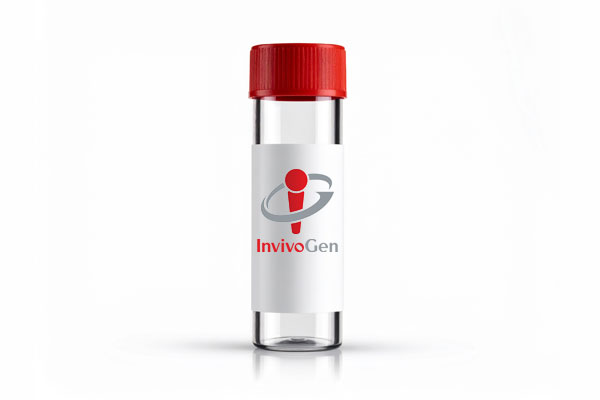Anti-hIL-33R-hIgG2
-
Cat.code:
hil33r-mab2
- Documents
ABOUT
Anti-human IL-33R (ST2, Il-1R4, IL1RL1) - Astegolimab biosimilar - CAS #2173054-79-8
Anti-hIL-33R-hIgG2 is a biosimilar antibody of Astegolimab, a human interleukin 33 receptor (IL-33R) antibody that blocks IL-33 signaling. This monoclonal antibody (mAb) targets the IL-1R4 (or ST2) subunit of the IL-33 receptor. Astegolimab is under investigation for the treatment of chronic obstructive pulmonary disease (COPD) and asthma.
Anti-hIL-33R-hIgG2 comprises the variable region of Astegolimab and the IgG2 constant region of Astegolimab for mild effector functions.
This mAb can be used together with HEK-Blue™ IL-33 cells for screening and neutralization assays to block IL-33R signaling induced by recombinant human IL-33 (see figure).
Key features
- Each lot is functionally tested and validated.
- The complete sequence of the antibody construct was verified.
- The absence of endotoxins is determined by the EndotoxDetect™ assay.
All products are for research use only, and not for human or veterinary use.
SPECIFICATIONS
Specifications
L-1R4, ST2, IL-33R
Human
Sodium phosphate buffer with glycine, saccharose, and stabilizing agents
Negative (tested using EndotoxDetect™ assay)
Neutralization assay, ELISA
Each lot is functionally tested and validated.
CONTENTS
Contents
-
Product:Anti-hIL-33R-hIgG2
-
Cat code:hil33r-mab2
-
Quantity:100 µg
Shipping & Storage
- Shipping method: Room temperature
- -20 °C
- Avoid repeated freeze-thaw cycles
Storage:
Caution:
Details
Astegolimab and IL-33 background
Astegolimab is a fully human IgG2 monoclonal antibody (mAb) that blocks interleukin 33 (IL-33) signaling by targeting the IL-1R4 (aka ST2) subunit of the IL-33 receptor [1].
IL‐33, a member of the IL‐1 cytokine family, functions as an alarmin, playing a crucial role in immune responses [2]. It is constitutively expressed and released in response to tissue injury or external stress exposure [2]. Common asthma exacerbation triggers, such as inhaled allergens and respiratory viruses, have been shown to induce IL-33 synthesis and release, directly linking IL-33 to asthma susceptibility and severity [1]. Once released, IL-33 binds to IL-33R on resident airway and inflammatory cells, initiating type 2 (T2) inflammation and pro-inflammatory cytokine production (e.g. TNF-α, IFN-γ, and IL-6), which subsequently contributes to airway inflammation and disease progression [1].
Since IL-33R is expressed on a variety of cell types involved in inflammatory diseases, including mast cells and eosinophils, Astegolimab offers a promising therapeutic approach for treating asthma and chronic obstructive pulmonary disease (COPD). [3].
References:
1. Kelsen SG, et al. 2021. Astegolimab (anti-ST2) efficacy and safety in adults with severe asthma: A randomized clinical trial. J Allergy Clin Immunol. 148(3):790-798.
2. Kotani N, et al. 2022. Population Pharmacokinetics and Exposure-Response Relationships of Astegolimab in Patients With Severe Asthma. J Clin Pharmacol. 62(7):905-917.
3. Varricchi G, Poto R, 2024. Towards precision medicine in COPD: Targeting type 2 cytokines and alarmins. Eur J Intern Med. 125:28-31.
DOCUMENTS
Documents
Technical Data Sheet
Validation Data Sheet
Safety Data Sheet
Certificate of analysis
Need a CoA ?





